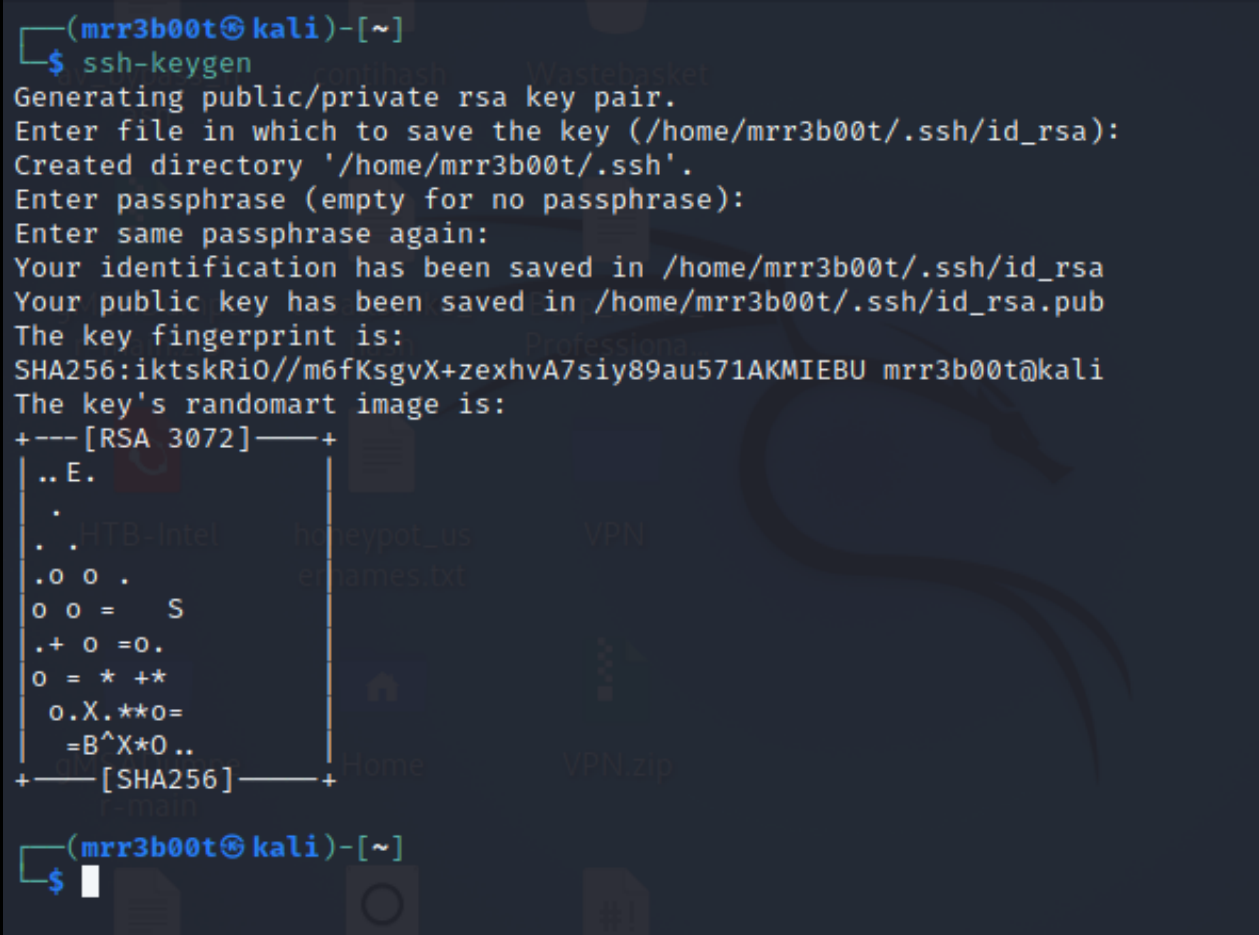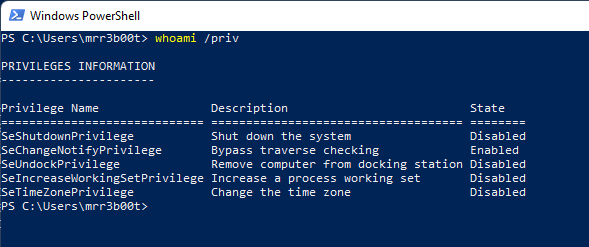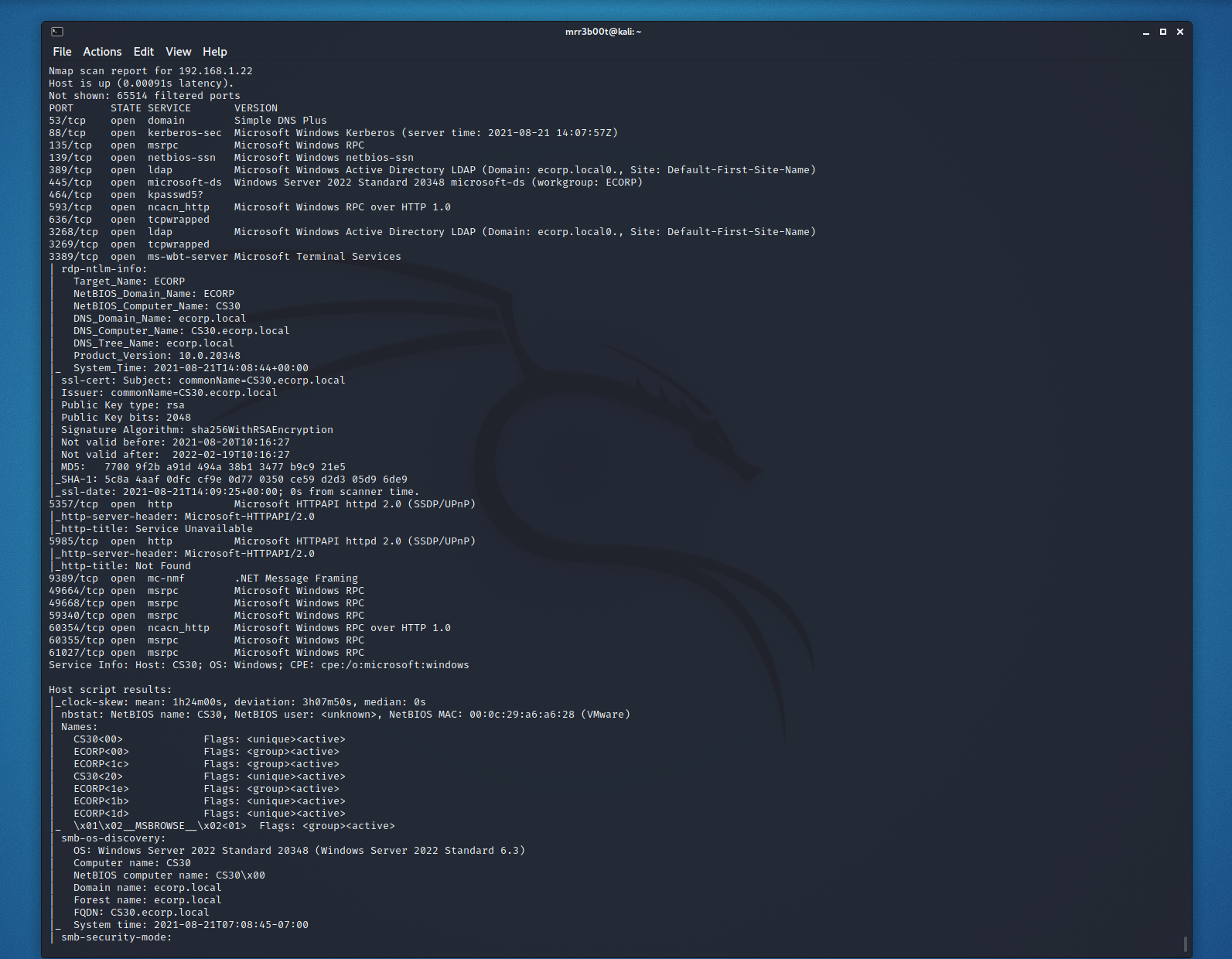
Cracking an SSH key with John the Ripper (JTR)
This is a super-fast blog to show how to crack sshkeys with JohnTheRipper from Kali VM.

Create a key
ssh-keygen Read more “Cracking an SSH key with John the Ripper (JTR)”

This is a super-fast blog to show how to crack sshkeys with JohnTheRipper from Kali VM.

Create a key
ssh-keygen Read more “Cracking an SSH key with John the Ripper (JTR)” →

Ever wanted to run honeypots all over the world but don’t want to deploy actual servers, or psudo servers everywhere? Ever wanted to run a C2 server but don’t want to expose your own IP and want a pool of redirectors? Well here’s a quick look at using SOCAT to forward HTTPS traffic from a VPS to a backend web server.
Create a linux virtual machine in a cloud services provider: Read more “Redirecting Traffic with SOCAT” →

Remote management and monitoring (RMM) and other remote access solutions are fantastic for enabling remote support of environments. Like most things in life though the intent of the user changes the tool from a force for good to a weapon of evil (I hate the use of the word weapon with software but it’s a blog so I’ll self-cringe).
The kill chain in the attack outlind by sophos isn’t one that you will be suprised at:
What might shock you more is the speed at which this was conducted. It’s not months or weeks, it’s hours and days (see the Sophos blog for more details!)
Remote access tools being abused isn’t a new thing but following a great writeup (https://news.sophos.com/en-us/2021/09/03/conti-affiliates-use-proxyshell-exchange-exploit-in-ransomware-attacks/?cmp=30728) of a Conti kill chain from Sophos Labs I figured I’d try and raise more awareness of some of the threats that organisations face, and the reality that defending against all threats is actually quite difficult for a lot of organisations (hell it’s technically not simply for anyone!) Read more “Would you know if these remote access tools were being used in your network environment?” →

Firstly, you need some Powershell Base64 commands, you could search your security logs or Sysmon logs for these, or simply generate some yourself!
powershell.exe -noprofile -ExecutionPolicy UnRestricted -EncodedCommand bgBlAHQAIAB1AHMAZQByACAAcwBlAGMAYQB1AGQAaQB0ACAAUABAADUANQB3ADAAcgBkADEAMgAzACEAIAAvAEEARABEADsAbgBlAHQAIAB1AHMAZQByACAAcwBlAGMAYQB1AGQAaQB0ACAALwBhAGMAdABpAHYAZQA6AHkAZQBzADsAbgBlAHQAIABsAG8AYwBhAGwAZwByAG8AdQBwACAAYQBkAG0AaQBuAGkAcwB0AHIAYQB0AG8AcgBzACAALwBhAGQAZAAgAHMAZQBjAGEAdQBkAGkAdAA=
Next, we head over to Cyber Chef!
https://gchq.github.io/CyberChef/

Now we copy the base64 component to the INPUT window:

We add the “From Base64” operation into our RECIPE! Read more “Decoding Powershell Base64 Encoded commands in CyberChef” →

Are you like me and always end up searching for easy stuff that you know but you just can’t remember the syntax all the time?
Well don’t worry I’ve got your back
 Read more “Windows admin 101 – Adding a local administrator account from the command line” →
Read more “Windows admin 101 – Adding a local administrator account from the command line” →

Have you ever wanted to see what would occur in an environment if a worm was a make its way in? I often work with customers to show them about lateral movement from a human operated perspective however sometimes it’s useful for people to visualise this better and to demonstrate what could occur if a worm was set loose. A great tool to help with this is Infection Monkey from Guardicore (https://www.guardicore.com/
The process steps are as follows:

Ok these are a really simple UAC bypass from a userland GUI perspective. This is about increasing process integrity levels – it’s not about performing LPE from low integrity to high/SYSTEM with no interaction. These clearly work in older version of Windows as well but since Windows 11 will be the current version in the near future I thought it was fun to re-visit these!
And just to be clear, a medium integrity process as an administrator user will have the following privileges:

What we are talking about here is to move to a high integrity process without knowing credentials or having the secure desktop launch. Read more “Windows 11 Privilege Escalation via UAC Bypass (GUI based)” →

“And I looked and behold a pale horse: and his name that sat on him was Death, and Hell followed with him.”
Firstly, Kudos to @j0nh4t for finding this!
I woke up this morning to see twitter fun with a LPE discovered in the Razer driver installation. Basically, when you plug a Razer mouse into a Windows machine, it will download (via windows update) and execute a process as system which has user interaction. This interface includes an install path selector, with this a right click + SHIFT (LULZ) on whitespace will allow you to launch a command prompt/PowerShell window (as SYSTEM).


Ever needed to test active directory in a hurry? Well, here’s some common commands to test active directory domain services. In this post today we are going to focus on DNS and username enumeration, there are however a range of weaknesses you want to look for:
Port Scanning and Service Fingerprinting
nmap -p- -sC -sV -Pn -v -A -oA ecorp.local.txt 192.168.1.22


Read more “Rapid Active Directory Security Testing of Windows Server 2022 and Kali Linux” →

WIndows Server 2022 is RTM! I love new operating systems, but also with the new, what is old? There will be loads of new blogs and articles on new features of Server 2022 however I wanted to see what mischief we can have with it! So I’ve decided to start looking at common vectors and exploits (from the fun to the serious) so that we can see how much of the world has changed (or not!)

So let’s take a look. The first thing I did was to offline replace stickykeys with cmd.exe – yes this method still works. But as lots of people will realise, you neeed physical access to the disk (well you don’t if you have access to someone’s vcenter you don’t!) but also the reg key methods also work! We can still backdoor RDP – here’s a script to disable NLA, Enable RDP, configure the firewall rules and set the registry keys to backdoor the system (clearly for lab use only!)
https://github.com/mr-r3b00t/RDP_Backdoor
Read more “Hacking Windows Server 2022” →